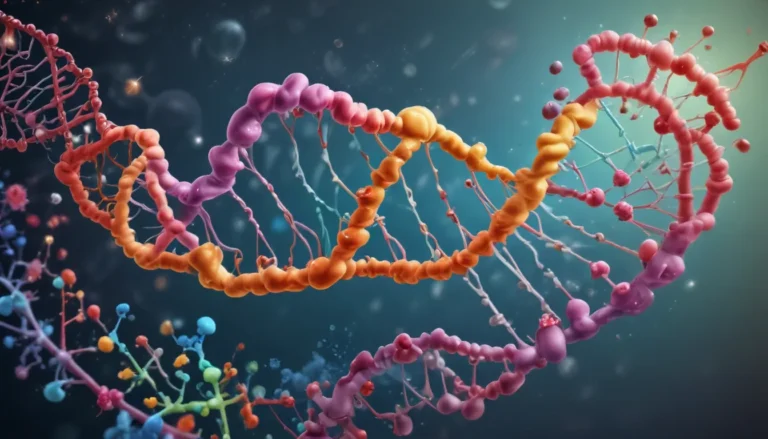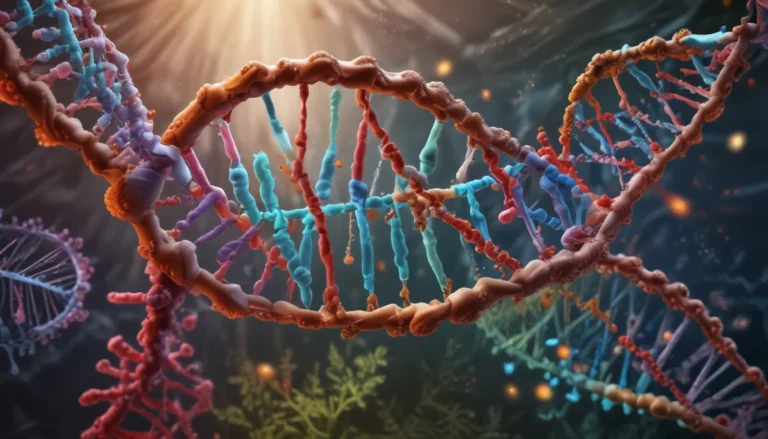A Note About Images: The images used in our articles are for illustration purposes only and may not exactly match the content. They are meant to engage readers, but the text should be relied upon for accurate information.
Nutrient cycles are the heartbeat of our planet, driving the flow of essential elements that sustain life in ecosystems worldwide. From the humble decomposers to the mighty nitrogen-fixing bacteria, these cycles are a symphony of interconnected processes that shape the world around us. In this article, we’ll embark on a journey through the intricate world of nutrient cycles, uncovering 18 astonishing facts that will deepen your understanding and appreciation of the natural world.
The Importance of Nutrient Cycles for Life
Nutrient cycles form the backbone of all living organisms, ensuring a steady supply of crucial elements like carbon, nitrogen, and phosphorus for growth and development. Without these cycles, life as we know it would falter, highlighting the vital role they play in sustaining ecosystems.
The Intricacies of the Carbon Cycle
At the core of nutrient cycles lies the carbon cycle, a fundamental process that fuels life on Earth. Plants absorb carbon dioxide during photosynthesis, passing it along the food chain as organisms consume one another. Through respiration and decomposition, carbon returns to the atmosphere, completing the cycle with seamless efficiency.
Unveiling Nitrogen Fixation’s Significance
Nitrogen fixation stands as a pivotal step in the nitrogen cycle, converting atmospheric nitrogen into a usable form with the help of specialized bacteria. These microbes forge symbiotic relationships with plants, enabling nitrogen’s incorporation into the food web and supporting the growth of diverse organisms.
The Stately Pace of the Phosphorus Cycle
Unlike its swift counterparts, phosphorus cycles at a leisurely pace through the environment, predominantly stored in rocks and sediments. Weathering and erosion gradually release phosphorus into the soil, enriching it over extended periods and nourishing plant and animal life.
The Symbiotic Dance of Water in Nutrient Cycles
Water’s role in nutrient cycles is irreplaceable, acting as a conduit for nutrients through precipitation, runoff, and groundwater. Its ubiquitous presence facilitates the seamless movement of vital elements within and between ecosystems, highlighting its indispensable contribution to the natural world.
Embracing the Crucial Role of Decomposers
Decomposers, including bacteria and fungi, form an integral part of nutrient cycling by breaking down organic matter and releasing essential nutrients back into the soil. Their tireless efforts recycle nutrients, ensuring the continuity of nutrient cycles and the sustenance of ecosystems.
Navigating Human Impacts on Nutrient Cycles
Human activities wield a profound influence on nutrient cycles, disrupting their delicate balance through actions such as deforestation, pollution, and excessive fertilizer use. These disruptions can trigger imbalances, eutrophication, and detrimental effects on ecosystems, underscoring the necessity of respecting and understanding nutrient cycles for a sustainable future.
Enriching Soil Fertility through Nutrient Cycles
As nutrients circulate through the environment, they fortify the soil, furnishing essential elements for plant growth and bolstering agricultural productivity. The cyclical nature of nutrient cycles not only sustains ecosystems but also nurtures fertile grounds for thriving vegetation.
The Delicate Dance of Phosphorus in Aquatic Ecosystems
Phosphorus assumes a pivotal role as a limiting nutrient in aquatic ecosystems, dictating the growth of organisms within these delicate habitats. Excessive phosphorus input from human activities can precipitate harmful algal blooms, exacerbating water quality concerns and necessitating careful management.
Weathering the Storm of Climate Change on Nutrient Cycles
Climate change’s far-reaching impact extends to nutrient cycles, altering precipitation patterns, temperature regimes, and the frequency of extreme weather events. These shifts ripple through ecosystems, orchestrating profound changes that reverberate across the natural world.
Embracing the Sanctuary of Wetlands in Nutrient Cycling
Wetlands emerge as sanctuaries of nutrient cycling, serving as natural filters that purify water and regulate nutrient levels before dissemination to other ecosystems. Their nurturing presence safeguards water quality and underlines their indispensable role in maintaining ecological balance.
Illuminating Human Influences on the Nitrogen Cycle
The nitrogen cycle bears the imprints of human activities, particularly through the widespread use of synthetic fertilizers and the combustion of fossil fuels. These actions have significantly altered the nitrogen cycle, contributing to increased nitrogen deposition in ecosystems and triggering air and water pollution concerns.
Navigating the pH Impacts of Nutrient Cycles on Ecosystems
Nutrient cycles exert a tangible influence on ecosystem pH levels, with the carbon cycle, for instance, shaping the acidity of water bodies. Enhanced carbon dioxide absorption by oceans can trigger ocean acidification, posing a threat to marine biodiversity and underscoring the interconnectedness of nutrient cycles.
Charting the Course of Nutrient Cycles in Global Climate Dynamics
The carbon and nitrogen cycles emerge as pivotal players in modulating greenhouse gas concentrations in the atmosphere, thereby exerting a significant influence on global climate dynamics. Alterations to these cycles can exacerbate climate change concerns, emphasizing the intricate interplay between nutrient cycles and planetary health.
Celebrating Specialized Adaptations of Organisms in Nutrient Cycling
Organisms exhibit specialized adaptations to enhance nutrient cycling, with mycorrhizal fungi forming symbiotic alliances with plant roots to aid nutrient uptake and nitrogen-fixing bacteria inhabiting legume root nodules to support nitrogen assimilation. These remarkable adaptations underscore nature’s ingenuity in optimizing nutrient utilization.
Unveiling Nutrient Availability as a Arbiter of Species Distribution
Species distribution hinges on nutrient availability, with specific plants and animals showcasing distinct nutrient requirements that dictate their spatial occurrence. Variances in nutrient availability across ecosystems shape the distribution and abundance of species, highlighting the profound impact of nutrient cycles on biodiversity.
Harmonizing Interconnected Nutrient Cycles for Ecosystem Resilience
Interwoven within intricate tapestries, the myriad nutrient cycles in ecosystems sustain a delicate equilibrium, influencing one another in a harmonious ballet of interconnectivity. Perturbations to one cycle can trigger cascading effects across others, underscoring the need for balanced nutrient cycling to foster ecosystem resilience.
Cultivating Sustainable Agriculture through Nutrient Cycle Practices
Balancing nutrient cycles emerges as a cornerstone of sustainable agriculture, with practices centered on nutrient management and mitigation of nutrient losses pivotal for promoting resilient food production systems. By championing sustainable practices, we can safeguard agricultural productivity while minimizing environmental impacts.
Embracing the Astonishing World of Nutrient Cycles
Each revelation about nutrient cycles unveils a tapestry of wonders that fuel the magnificence of our natural world. From the microscopic ballet of decomposers to the global implications of human interactions, nutrient cycles epitomize the intricacy and beauty of life’s interconnected processes. As we journey through these remarkable cycles, let’s nurture a profound appreciation for the profound impact they wield on ecosystems and the promise they hold for a sustainable future.
In Conclusion
Delving into the depths of nutrient cycles unveils a world of marvels that underpin the ecosystem’s delicate balance. The 18 incredible facts we’ve explored shed light on the intricate dynamics of nutrient cycling, revealing their indispensable role in sustaining life on Earth. By recognizing and cherishing these cycles, we pave the way for informed decisions that preserve and protect our planet’s precious equilibrium.
FAQs
-
What are nutrient cycles?
Nutrient cycles encompass the biogeochemical processes through which essential elements are recycled and reused in ecosystems, involving the movement and transformation of elements like carbon, nitrogen, and phosphorus. -
Why are nutrient cycles important?
Nutrient cycles are crucial for maintaining ecosystem equilibrium, providing vital elements for organism growth and development while bolstering overall ecosystem health and productivity. -
How do nutrient cycles work?
Nutrient cycles encompass a series of processes, including uptake, assimilation, transfer, and release of nutrients, occurring through intricate interactions between organisms like plants, animals, bacteria, and fungi. -
What are some examples of nutrient cycles?
Examples of nutrient cycles include the carbon cycle, nitrogen cycle, and phosphorus cycle, governing the movement and transformation of these elements across various reservoirs such as the atmosphere, soil, water bodies, and living organisms. -
How do human activities impact nutrient cycles?
Human activities, such as deforestation, industrial agriculture, and excessive fertilizer use, can disrupt nutrient cycles, leading to imbalances, pollution, and ecosystem degradation with far-reaching consequences. -
Can nutrient cycles be restored?
With diligent management and conservation efforts, nutrient cycles can be restored and preserved. Implementing sustainable practices, combating pollution, and championing biodiversity conservation are critical steps in safeguarding and revitalizing nutrient cycles.
Embark on a journey through the kaleidoscopic world of nutrient cycles, where each revelation unveils a tapestry of wonders that enrich our understanding of the natural world. As we delve deeper into these marvels, let’s cherish the delicate interplay of nutrient cycles and nurture a profound appreciation for the interconnected processes that sustain life on Earth.






